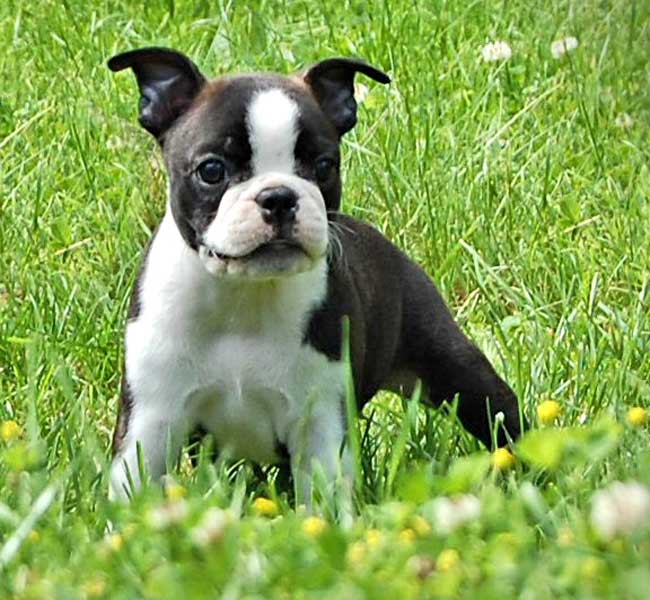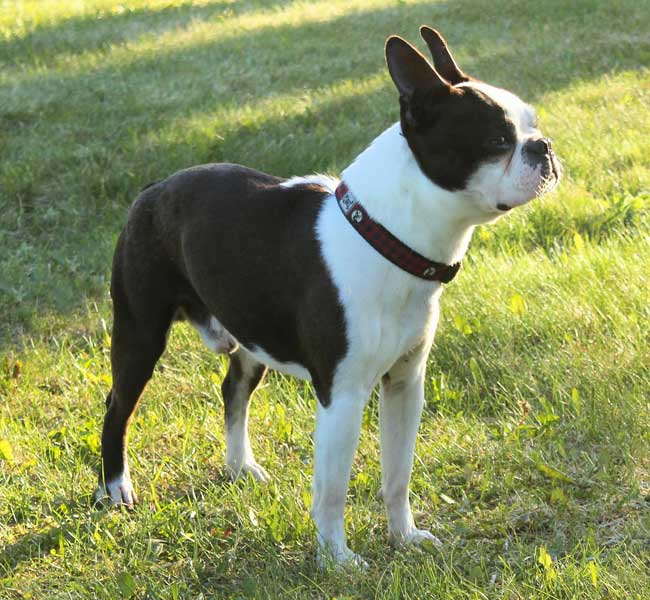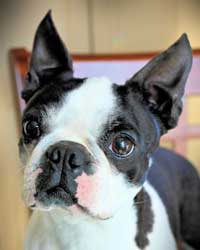Origin: Probably the first originator of the breed came from England and was a cross between the bulldog and now extinct white English terrier. This dog was imported to Boston in the US and after several years and breeding to correct type to develop the current look, the breed was recognized by the American Kennel Club in 1893. Because of its kind and gentle disposition, this breed is often referred to as the American gentleman. It is a native of the United States.
General Appearance: Small breed, lively, smooth coated and compactly built, short back, strongly made but must never be too stocky nor too lean and racy. Tail is short, carried rather low, head is blocky with a short muzzle and teeth even or slightly undershot. (Lower teeth protrude slightly in front of top teeth). Eyes are large and round and dark in colour. Ears are carried erect, and can be cropped to an elegant point or remain in a natural state, that of a rounded ‘bat’ ear.
Weight: Must not exceed 25 pounds
Coat: Short, fine, smooth and shiny with characteristic ‘tuxedo’ markings
Colour: may be black, seal, black brindle or brindle. All colours must have white markings with most ideal being white band on face, blaze between eyes, white on fore chest, white collar, white front legs and white toes on rear feet.
Temperament: intelligent and sweet, excels as a family companion. Good with children and other pets. Any rodents are fair game. Generally does not bark excessively.
Activity: Lively and active but also sensible. Good for short brisk walks, but not for biking. Muzzle and head are short so care must be taken in hot weather. Can excel in all sorts of performance areas such as obedience, rally etc.
Crate training: yes, a must.
Diet: feed a good quality food, twice daily. Observe weight closely and avoid switching foods. Must not become overweight. Generally are good eaters. Free feeding not recommended. Feed at same time each day. Water always available.



